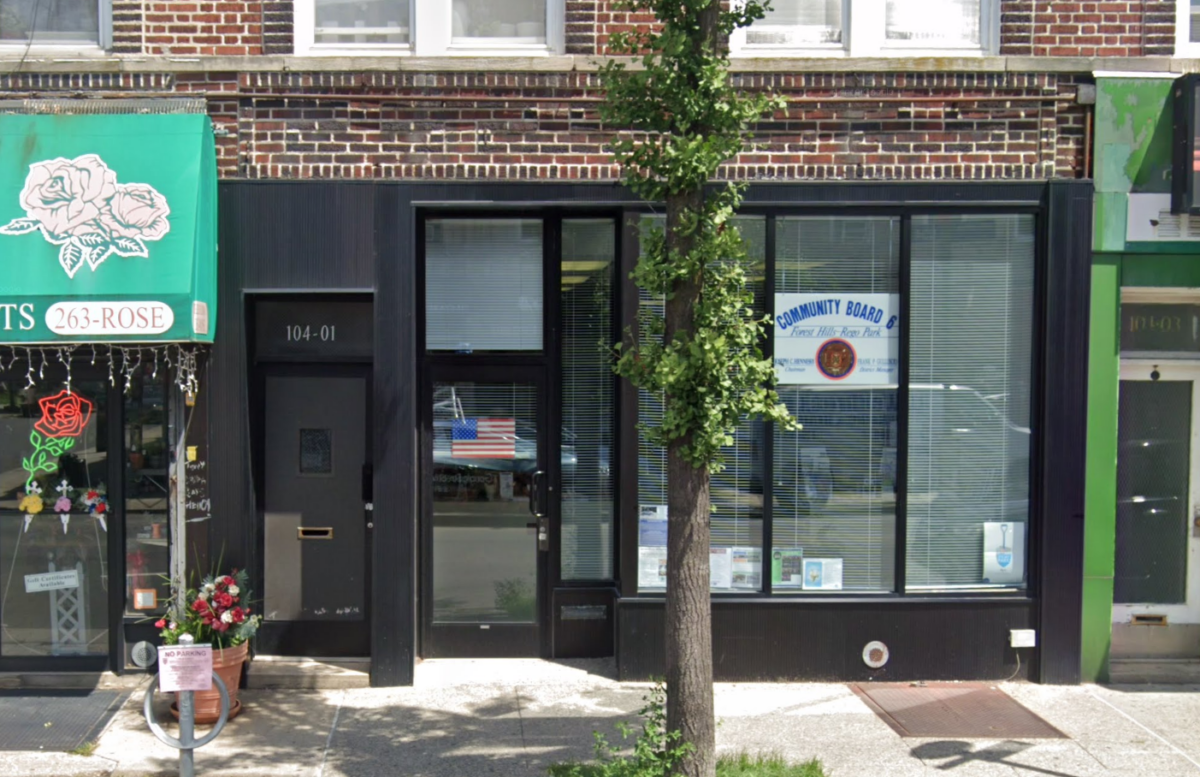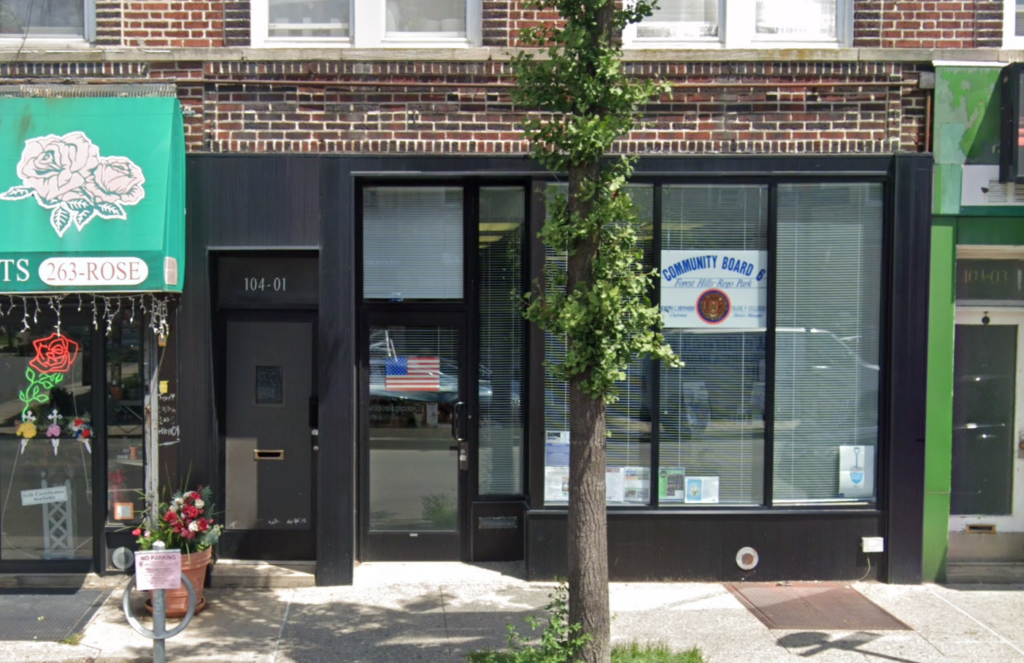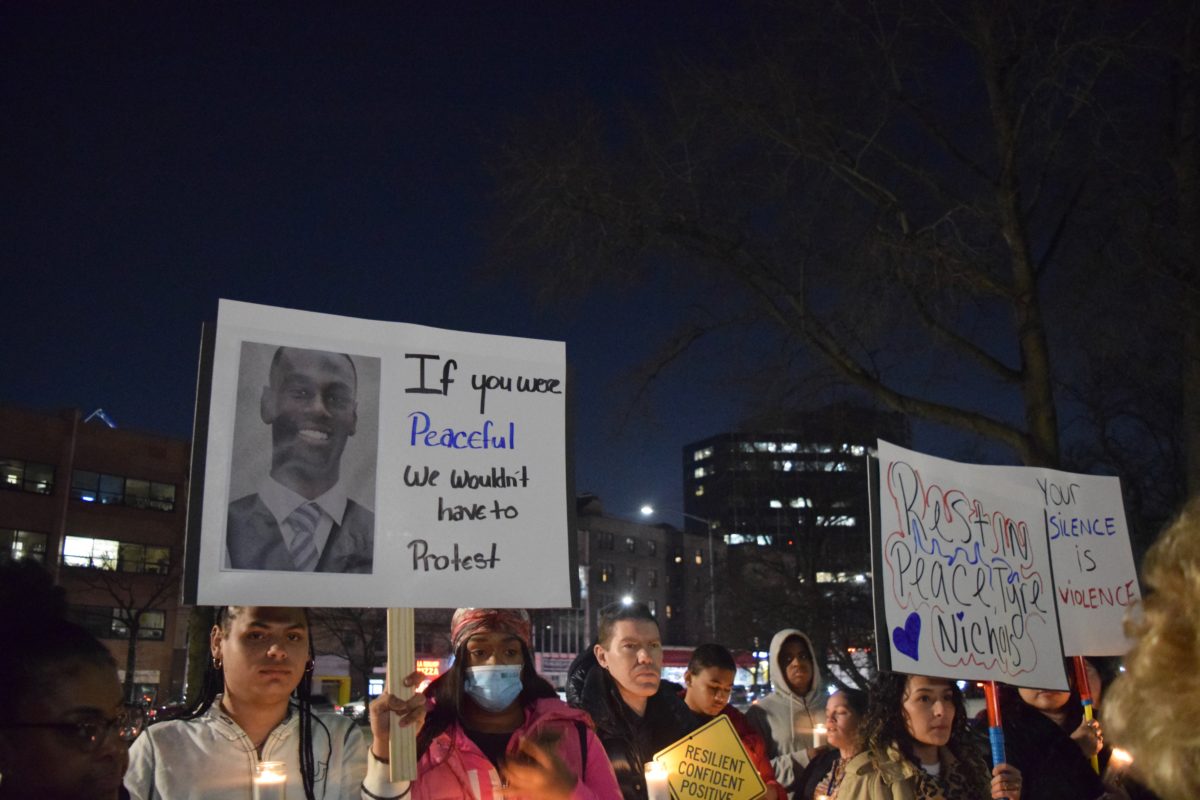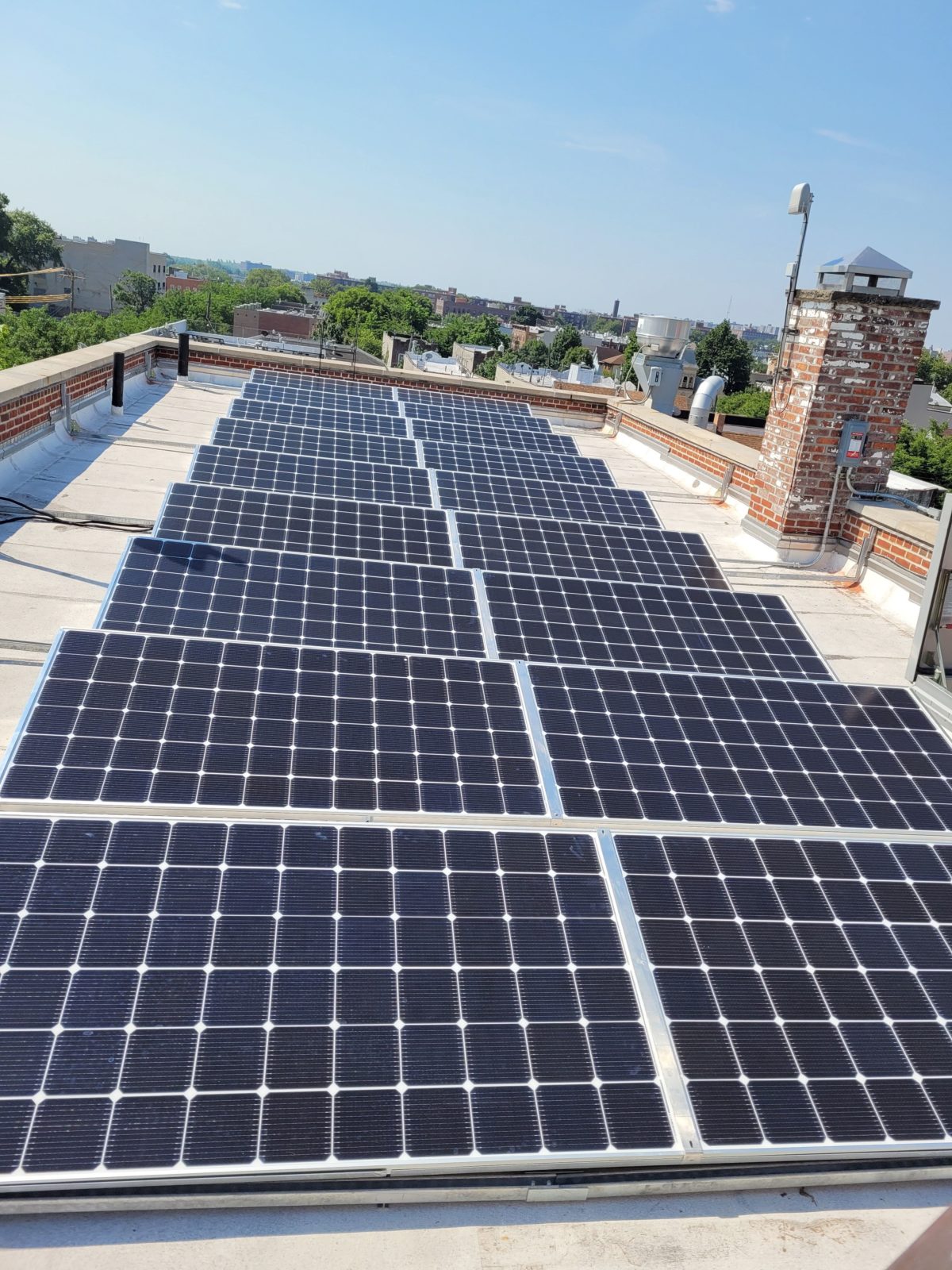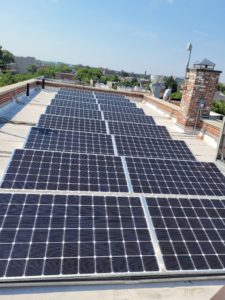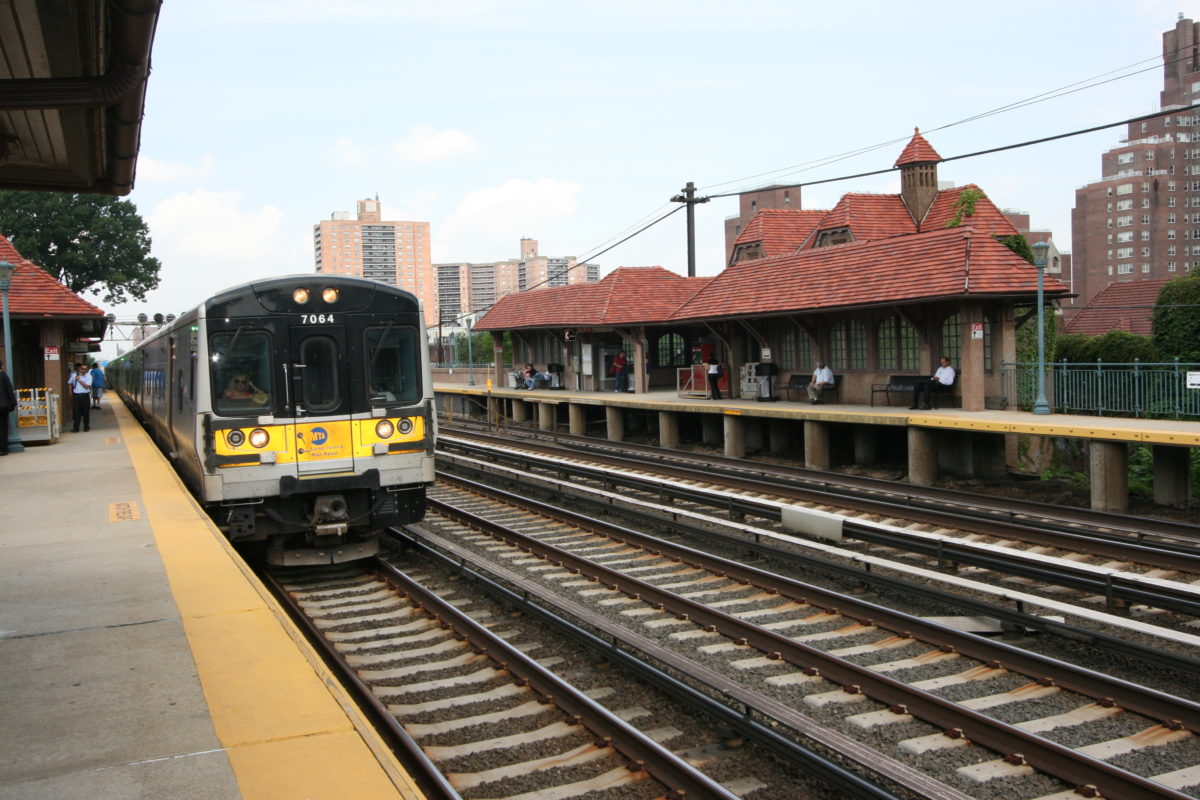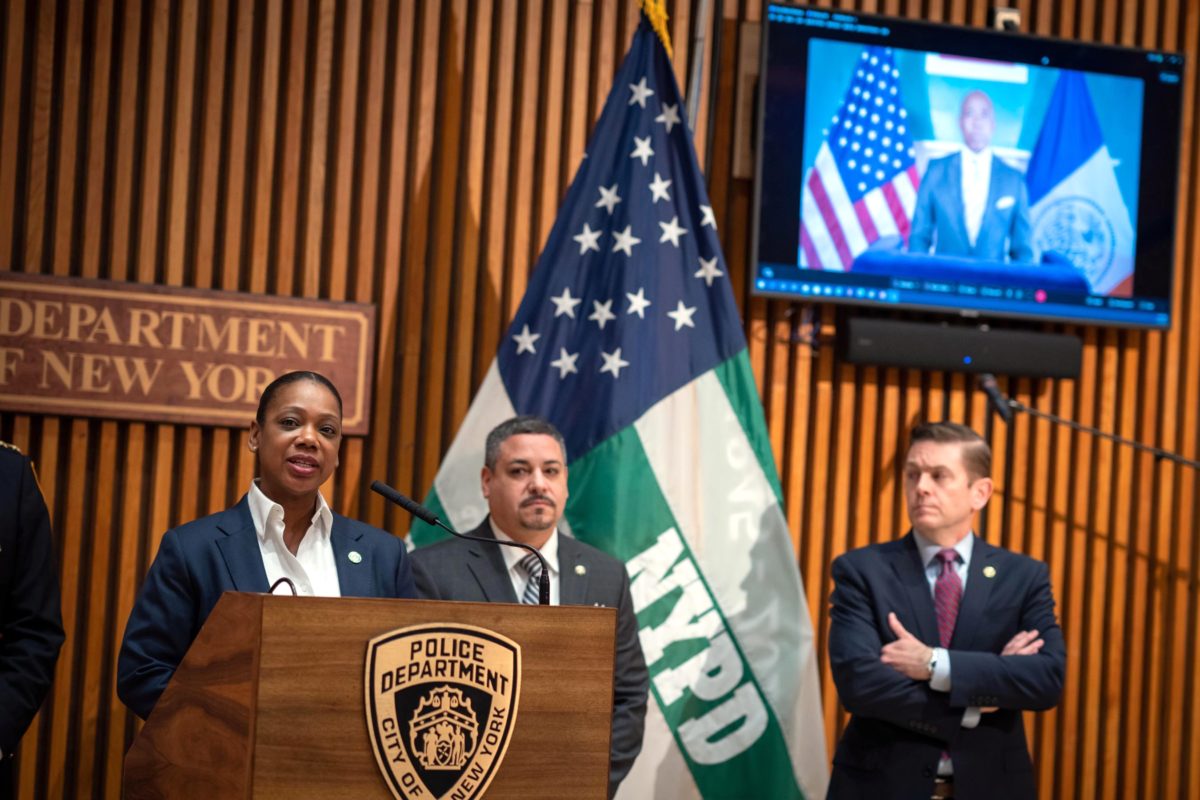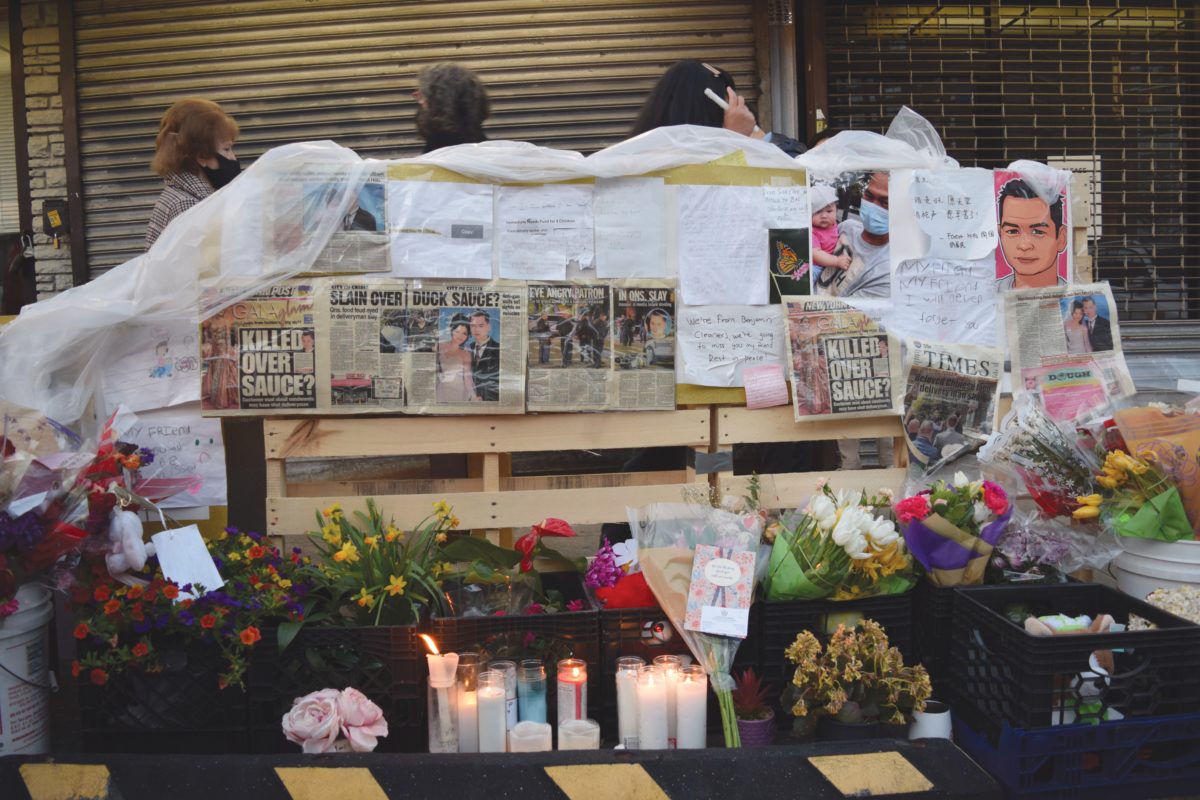Seven Spots to See the Bloom in Queens

Fresh Meadows Corona Park, Photo Courtesy of David Avila/NYC Parks
By Iryna Shkurhan | ishkurhan@queensledger.com
With each unfurled petal and new splash of color, we settle into the new spring season. All across the city, cherry blossom trees are making a statement. Luckily you don’t have to leave Queens to take in their beauty. They won’t be here for long, so check out one, or all seven, of our recommendations for where to witness the best blooms.
According to the NYC Parks Department, there are three main varieties of cherry blossom trees in the city: Okame, Yoshino and Kwanzan. They bloom at separate times so if you miss Okame cherry trees, with tiny pink petals and red centers that bloom in mid to late March, don’t fret. Yoshino trees, with light pink and white petals, and fluffy pink Kwanzan Cherry Trees reach peak bloom in mid to late April. But remember, any strong storms, rain or wind can shorten the peak bloom season, which only lasts about two weeks.
Flushing Meadows Corona Park
You won’t miss the Okame blossoms in Flushing Meadows Corona Park, especially since they are right near the towering Unisphere. Experts say that they are some of the first trees to bloom in NYC. As the bloom fades, you can marvel at the thousands of petals that coat the ground.
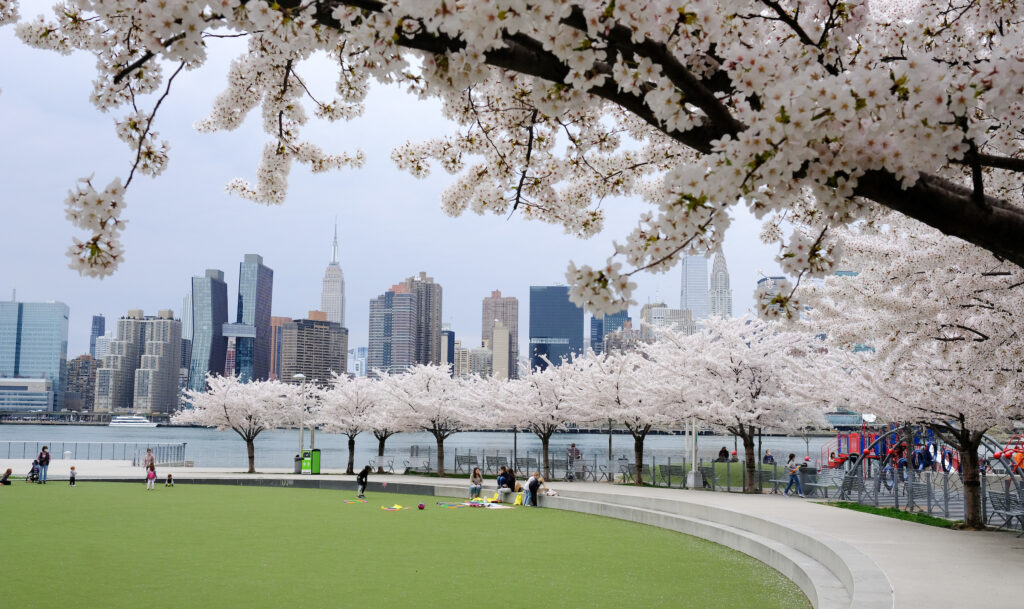
Hunter’s Point Park in Long Island City, Photo Courtesy of David Avila/NYC Parks
Hunter’s Point South Park
This newly constructed waterfront park in Long Island City with skyline views of Manhattan also has a strong lineup of cherry blossom trees. They’re already blooming, so don’t wait too long before paying the area a visit. While you’re there you can check out the picnic areas, bikeway, adult fitness equipment and a designated area for dogs.
Lewis Latimer House Museum
This historic home commemorates Latimer’s legacy as an electrical inventor who played a significant role in the invention of the telephone with no formal education. Cherry blossoms pop right in front of the colorful Queen-Anne style wood-frame home that is also open to the public with pay-as-you-wish admission. The house is open Fridays and Saturdays 11am- 5pm, but you can stop by to see the bloom out front anytime.
Queens Botanical Garden
Conveniently located near the Main Street entrance of the Queens Botanical Garden, Cherry Circle is lined with a variety of blossom trees. According to QBG, several of the trees have been adopted in memory of a loved one. The Four Seasons Border, installed in 2007, is only steps away and has its own blooms. If you’re trying to see a large bloom, this should not be your first destination. But access to other notable plants will make it worth the visit.
Kissena Park
While you’re at QBG, visit Kissena Park right next door for even more blooms. This expansive park has a lake and several exotic tree species aside from cherry blossoms. For seasoned and budding cyclists, the park’s 400-meter velodrome, coined as the “track of dreams,” is one of the smoothest rides around.
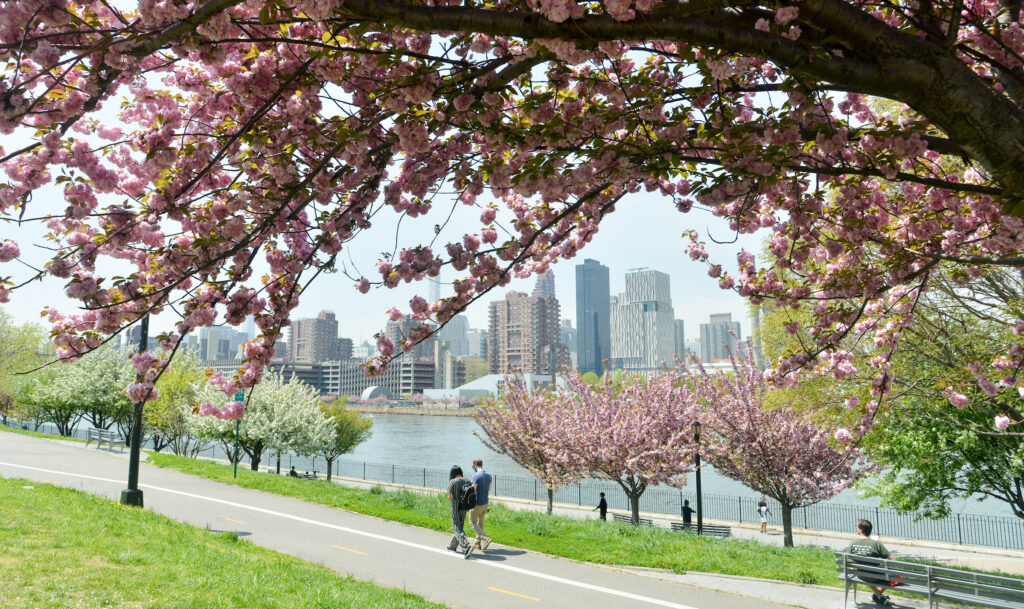
Rainey Park in Astoria, Photo Courtesy of David Avila/NYC Parks
Rainey Park
Another waterfront park alongside the East River, right across from Roosevelt Island, is Rainey Park promenade in Astoria. Take in the views of Manhattan’s Upper East Side from a bench with Okane cherry blossoms towering alongside the promenade. Soon enough, Kwanzan cherry trees will bloom on the park’s lawn.
Cunningham Park
In one of the largest parks in the borough, 28 cherry blossom trees sit gracefully just outside the park along 193rd Street. They were planted in 2005 following the dedicated effort of Friends of Cunningham Park to raise funds from city officials and grants. Donations of labor and mulch from a Brooklyn landscaping company made the project possible. Without the efforts of local citizens, the park would be bloomless today.


